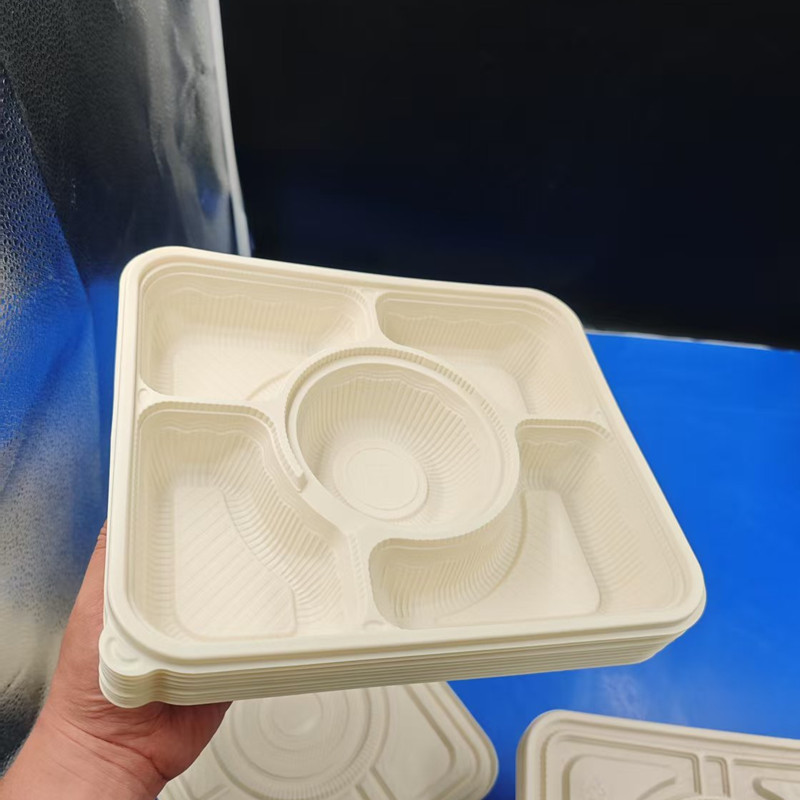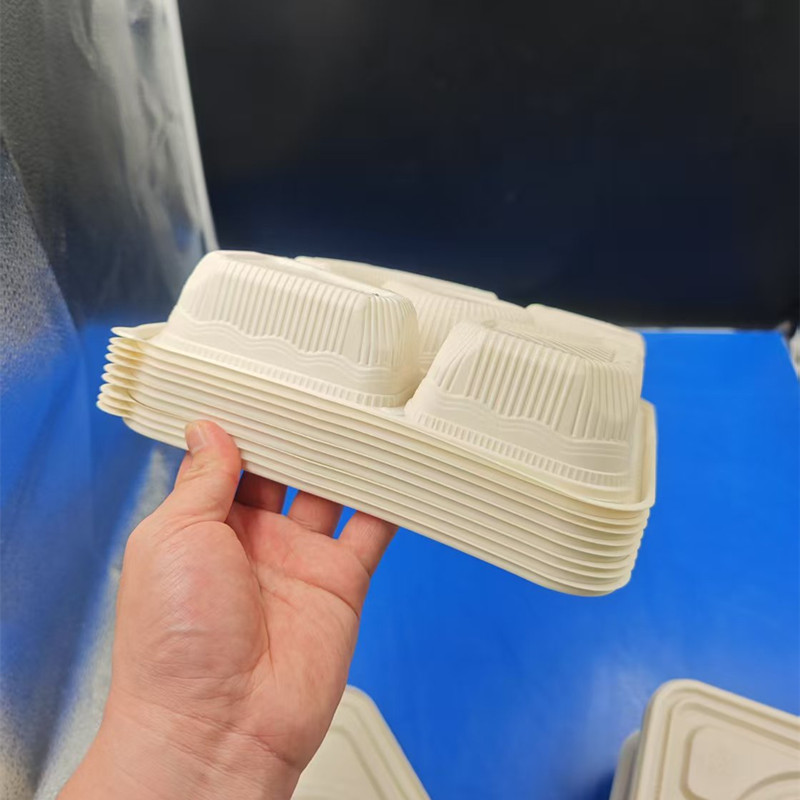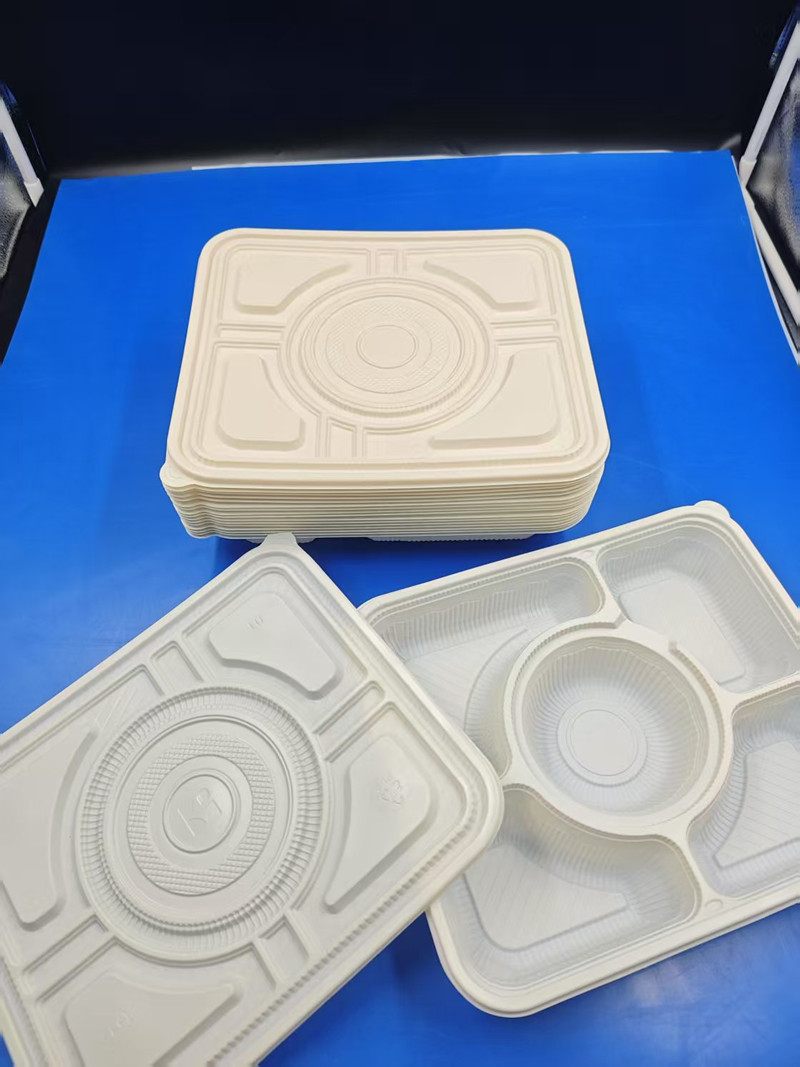Polylactic Acid (PLA) eco-friendly meal boxes are sustainable alternatives to traditional plastic containers, crafted from renewable resources like corn starch or sugarcane through microbial fermentation and polymerization. These biodegradable products offer a compelling blend of environmental responsibility, safety, and practicality, making them increasingly popular in the global shift toward plastic reduction.
Biodegradability:PLA is fully compostable under industrial conditions (50–60°C, high humidity, and specific microorganisms), breaking down into carbon dioxide and water within 6–12 months. However, in natural environments (e.g., soil or oceans), degradation slows due to lower temperatures and limited microbial activity, taking 2–5 years. This contrasts sharply with conventional plastics, which persist for centuries.
Renewable Origin:Derived from plant-based sources, PLA reduces reliance on fossil fuels. For instance, corn starch is hydrolyzed into glucose, fermented into lactic acid, and then polymerized into PLA pellets. This process minimizes greenhouse gas emissions and fosters a circular carbon economy.
Food Safety & Non-Toxicity:PLA is certified safe for direct food contact by organizations like the U.S. FDA and European EFSA. It does not leach harmful chemicals like BPA or phthalates, ensuring food quality remains uncompromised.
Mechanical Performance:PLA boasts tensile strength and stiffness comparable to traditional plastics, making it suitable for structural applications. Advanced formulations with heat-resistant modifications (e.g., copolymerization) enable use in microwaves (up to 120°C) and hot food storage (e.g., soups, fried dishes). Standard PLA containers typically withstand temperatures up to 110°F (43°C).
Transparency & Aesthetics:PLA offers clarity similar to PET plastic, allowing consumers to visually inspect contents while enhancing packaging appeal. Its smooth surface also supports vibrant printing for branding purposes.







